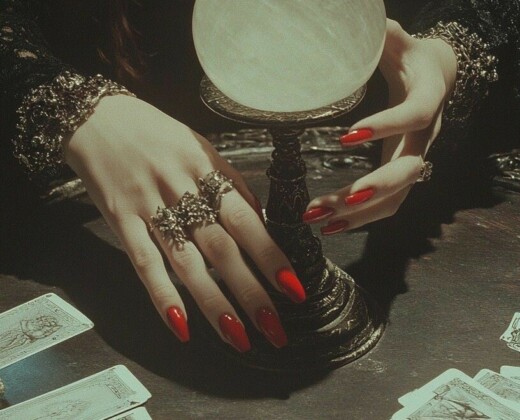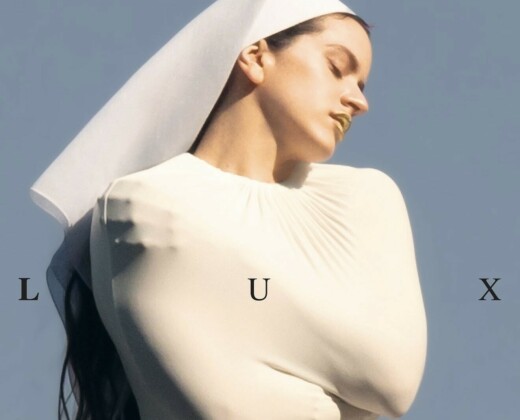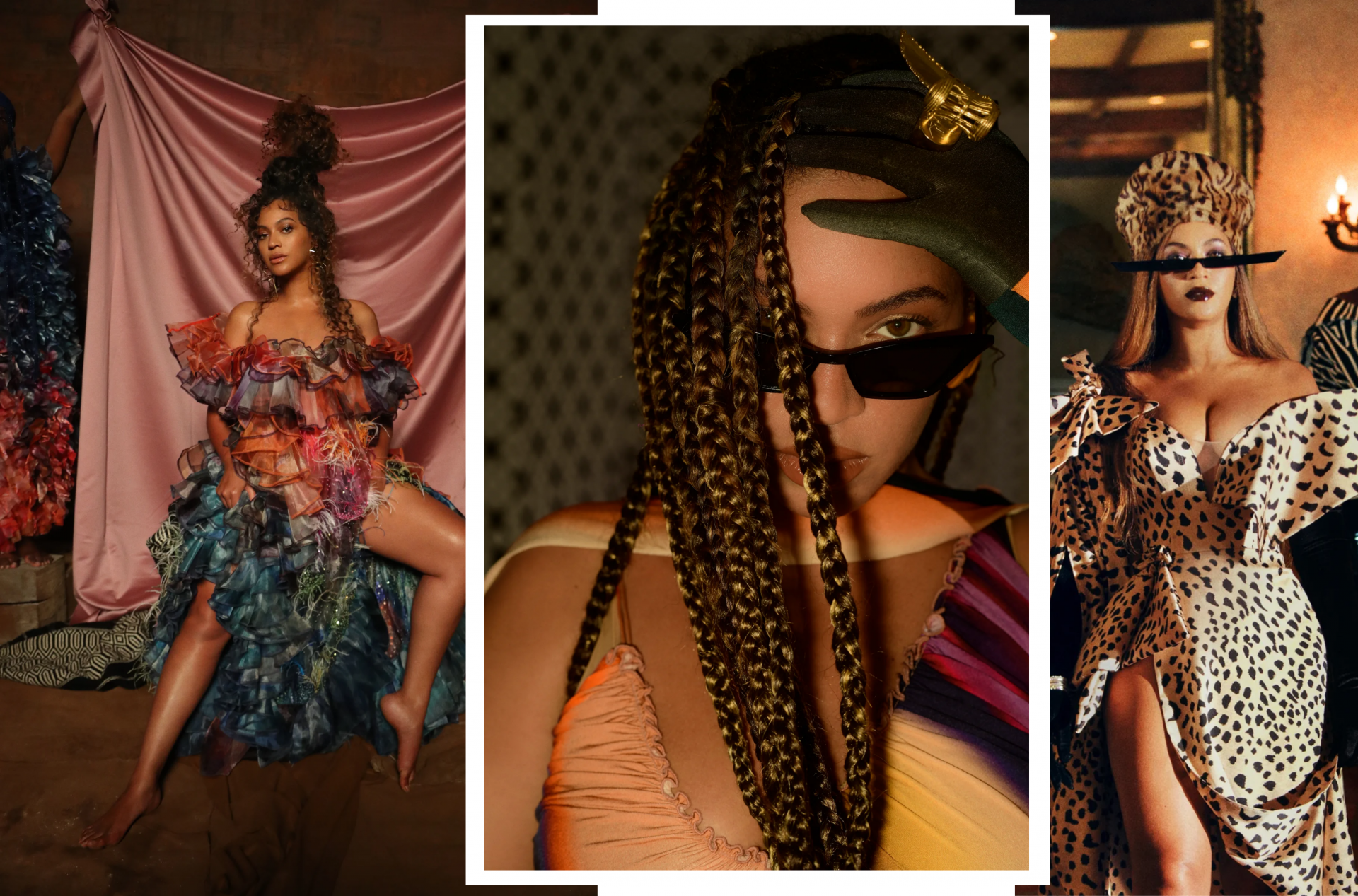
Midway through Black is King, the new visual album by Beyoncé, a voiceover starts speaking on the theme of kingship and responsibility: “The royalty in you is there for you to be a blessing to others”. Obviously it’s talking about Simba, represented throughout the film in human form (from a small boy in cowhide to a thrill-seeking adolescent, rowdily cruising through a neon-bathed city at night). But it’s hard not to take it as a nod to the artist herself, Queen Bey, whose aim in making this album is centered around exactly that mentality: using her worldwide platform to raise the profile of others, especially African creatives.
This purpose is clear from the outset. In the opening scenes, Beyoncé’s voice announces her intention to celebrate the African diaspora and its culture; as she walks along a beach cradling a baby in her arms, the viewer hears her honeyed Texan lilt: “We journey far, and can still always find something like home”. Later, during ‘Already’, a crowd of dancers ripple the Pan-African flag (horizontal stripes of red, black, and green, designed by Marcus Garvey in 1920), a bold banner of political unity for all those of African descent. And at the end of opening song ‘Bigger’, a seascape emerges onscreen while Beyoncé’s voice is heard again: “The coast belongs to our ancestors,” she says, as we are presented by the brooding blues of dusk on the shoreline.
Beyonce, Shatta Wale, Major Lazer- ALREADY- From Beyonce Youtube Channel
Through both sight and sound, Black is King foregrounds this powerful vision of pre-colonial Africa, and brings its symbolic weight to bear on the racial injustice and inequalities of today. But it isn’t symbolism alone; Black is King incorporates and promotes Black talent from across the creative industries. African collaborators make up a significant part of the track-list (the Nigerian musician Tekno on ‘Don’t Jealous Me’, the Malian singer Oumou Sangaré on ‘Mood 4 Eva’), and this extends to the clothing and set design. The effect of these choices is substantial and immediate; Loza Maléombho, a designer based on the Ivory Coast, made a monochrome jacket with oversized shoulder- pads for Beyoncé to wear in ‘Already’, which has already become a fashion hit.
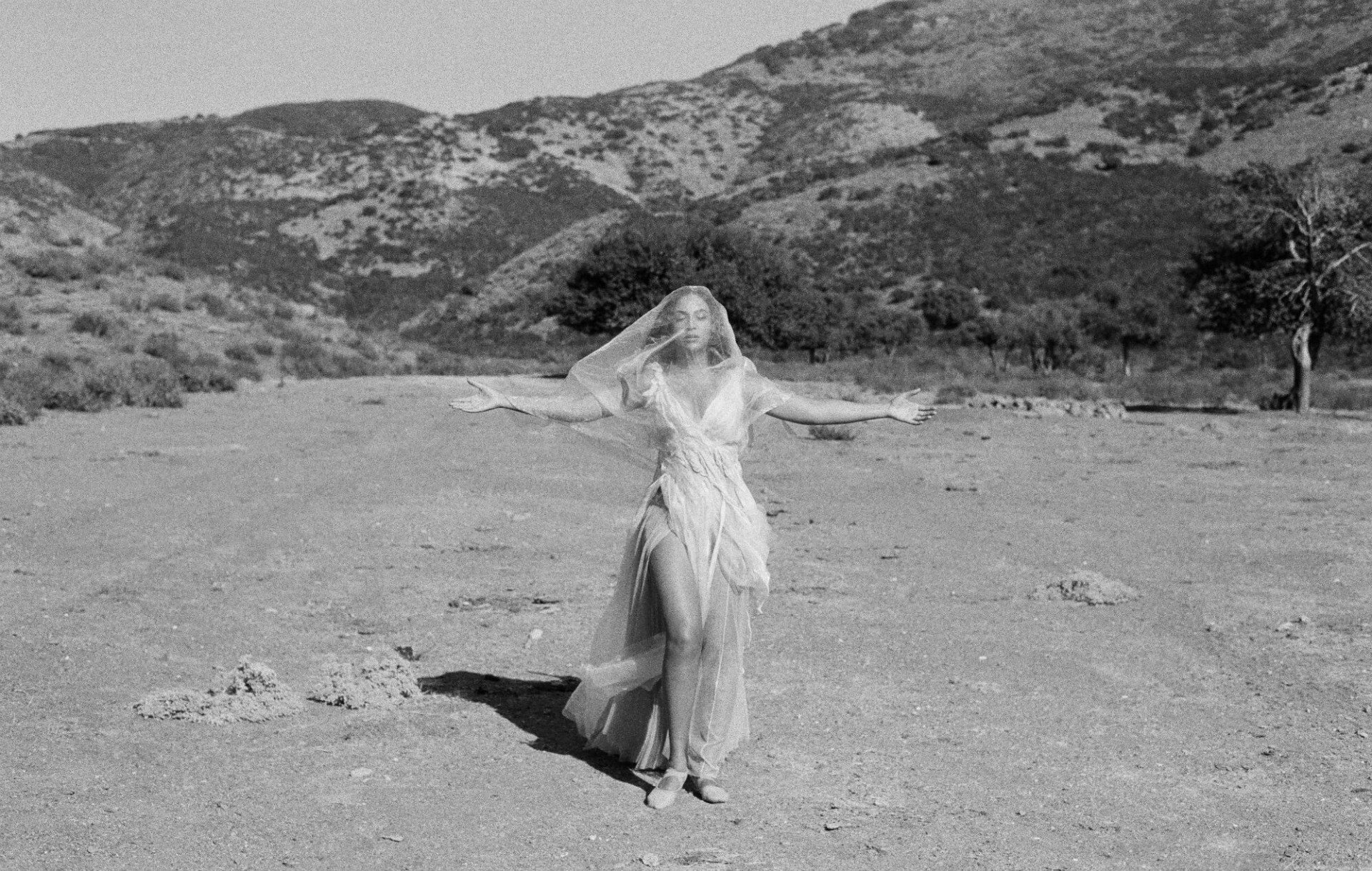
It goes without saying that the visual element is striking, inventive, and overwhelmingly beautiful – we have come to expect nothing less after the sensory masterpieces of Beyoncé (2013) and Lemonade (2016). But where those albums – especially Lemonade – were personal and emotionally intimate, Black is King is panoramic, swooping, and almost Biblical in scope and tone. Instead of looking inward, it reaches outward; the camera repeatedly wheels down from above, seeking out Beyoncé as a single figure on deserts, oceans, in a flower-filled boat on a lake, or reclining in a meadow (her outfit the colour of sunflowers).
The cameos, too, are nothing short of glorious. Before Lemonade, we would have never dreamed of Serena Williams twerking in black and white, but now – after it’s happened– we honestly can’t imagine a world without it. The same goes for Black is King; before its release, we could not have imagined Beyoncé serenading Naomi Campbell, or visualised Tina Knowles at a tea party crowned with a headdress of fuchsia pink feathers. But now, it seems incredible that such scenes weren’t out in the world sooner.
Beyoncé grounds the grandiose cinematography and superpowered outfits with her now-signature mix of cheek and charm. Her more “fun” side was first glimpsed in the ‘Flawless Remix’ video with Nicki Minaj, and on the “homemade” 7/11 music video (a lockdown-friendly hit before the lockdown was even on the horizon) – here, it’s shown in flashes of social satire. During ‘Mood 4 Eva’, Beyoncé and Jay-Z play mistress and master of a pastel orange palace, and she struts around in a voluminous silk dress while a (white) butler follows, dutifully carrying her train. There are not one but two scenes showing paintings of Beyoncé as the Madonna, complete with spiky halo – kitsch at its outrageous best.
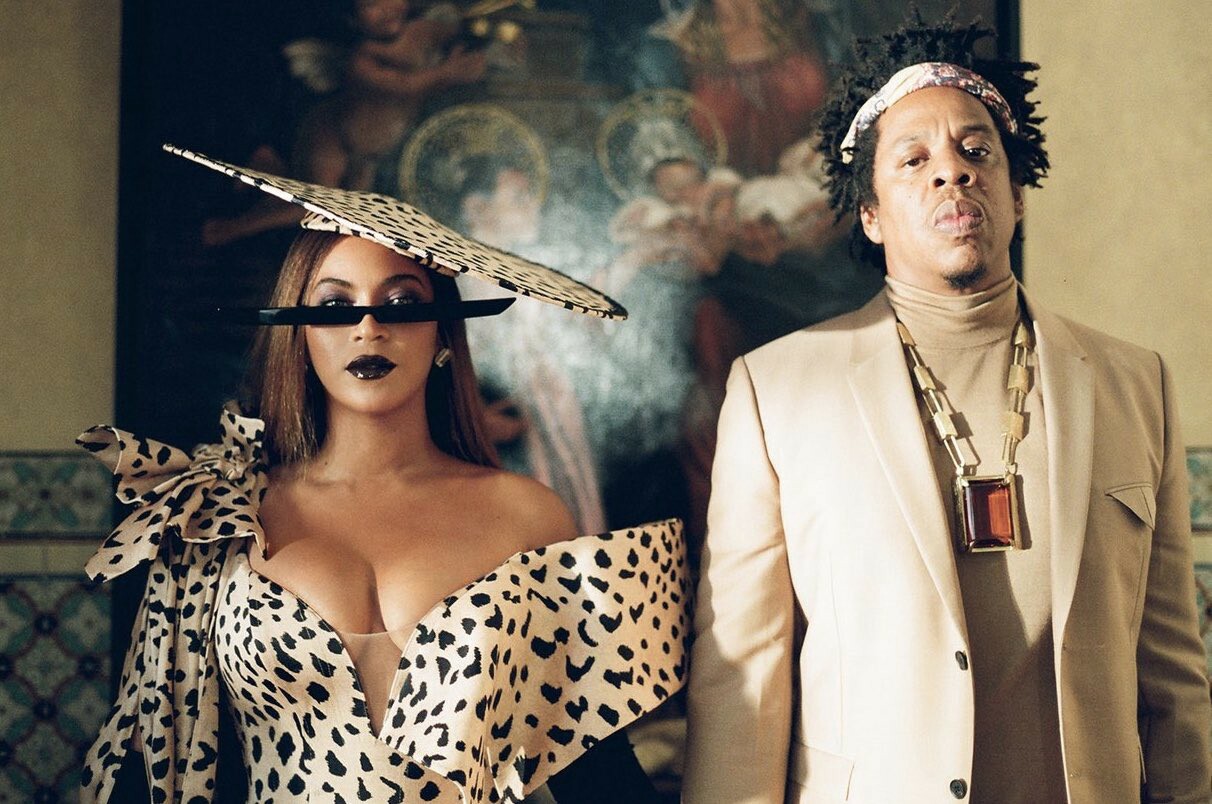
In the second of these, she and Jay-Z stand in front of the portrait in a partial recreation of the Apesh*t, Whereas before it was the Mona Lisa presiding over them, now it’s Beyoncé herself. Her art and her output have come full circle; as well as challenging how the past is presented, she’s now creating new narratives to take into the future. In the interlude between ‘Water’ and ‘Brown Skin Girl’, a male voice speaks: “We need to show Black men and women are emotional, are strong, are smart, intuitive”. Black is King may not be perfect – and has come under some criticism from other artists – but as a celebration of Black talent and creativity, it surely succeeds at its own intention, and succeeds in spectacular style.
Words by Jaleh Brazell
Graphics by Clare Stephenson




